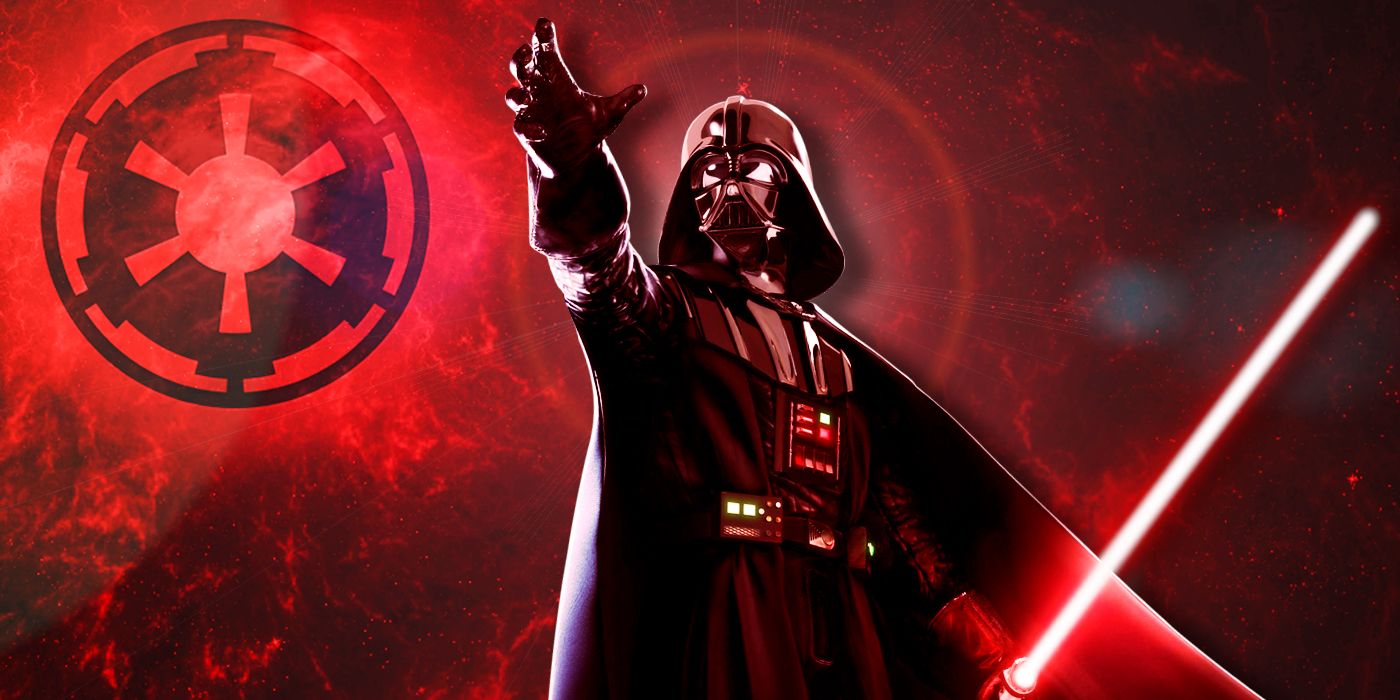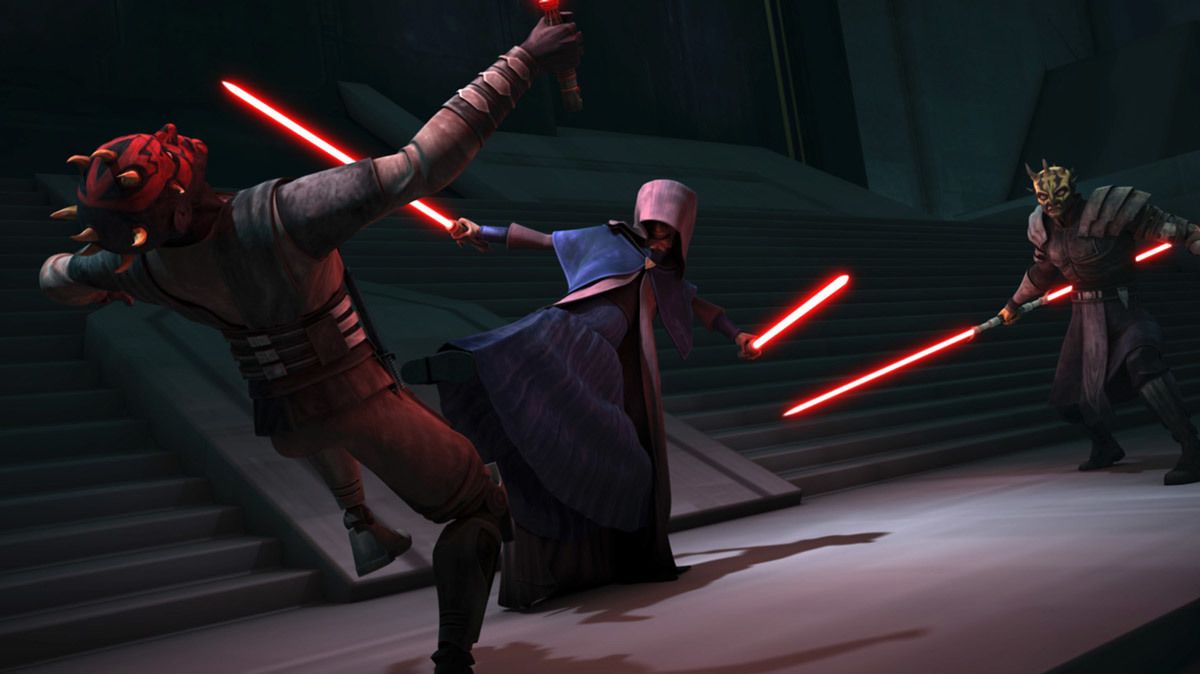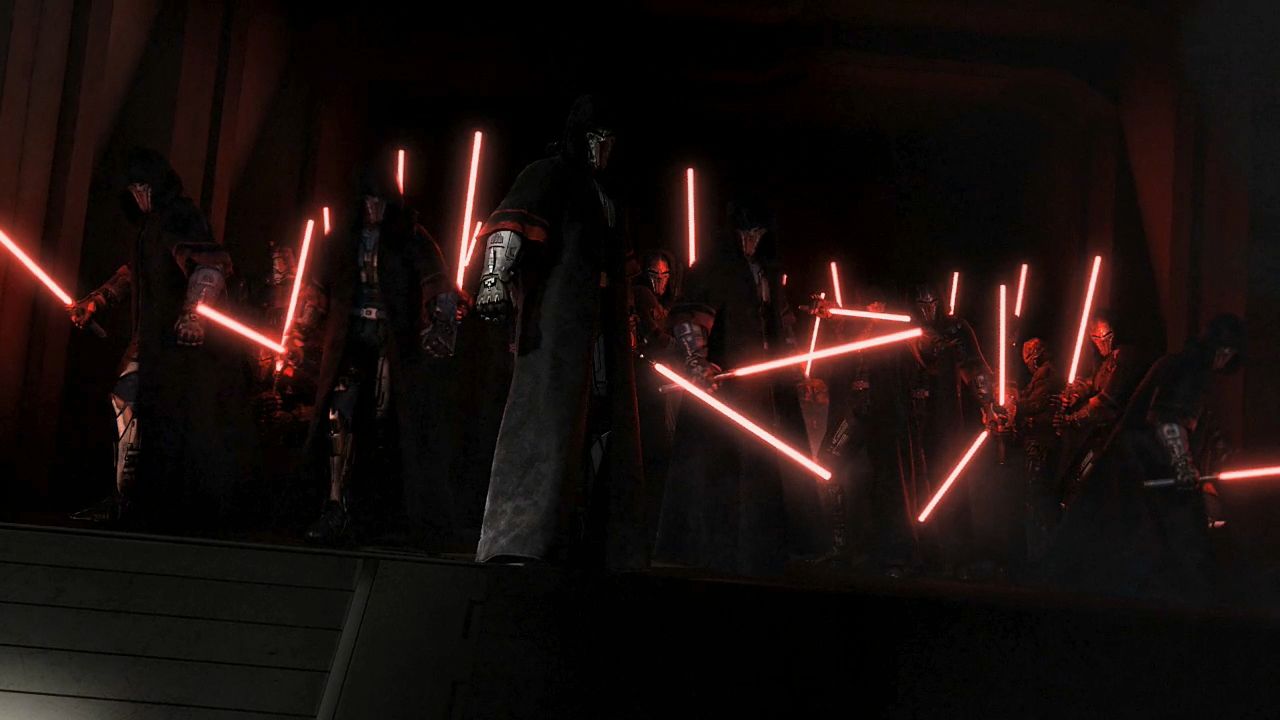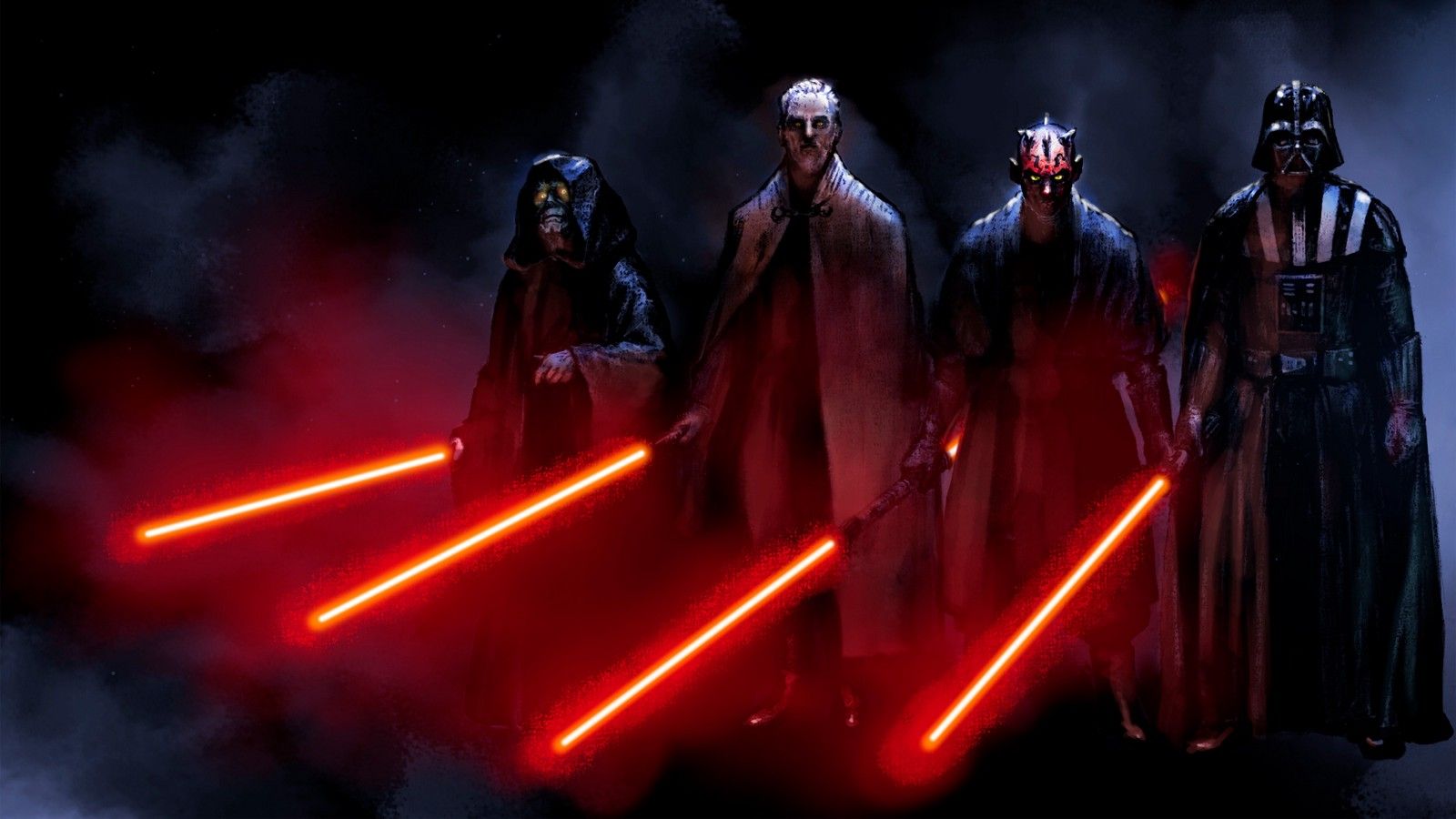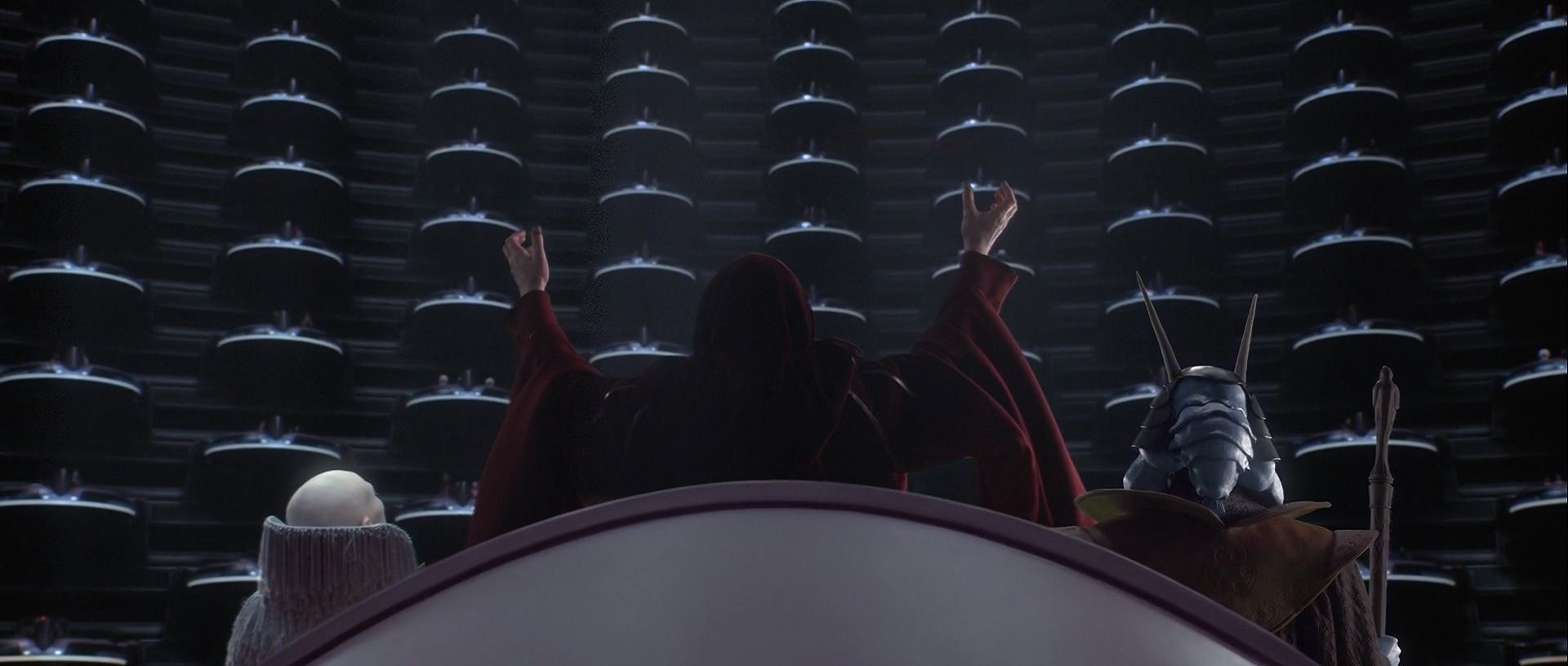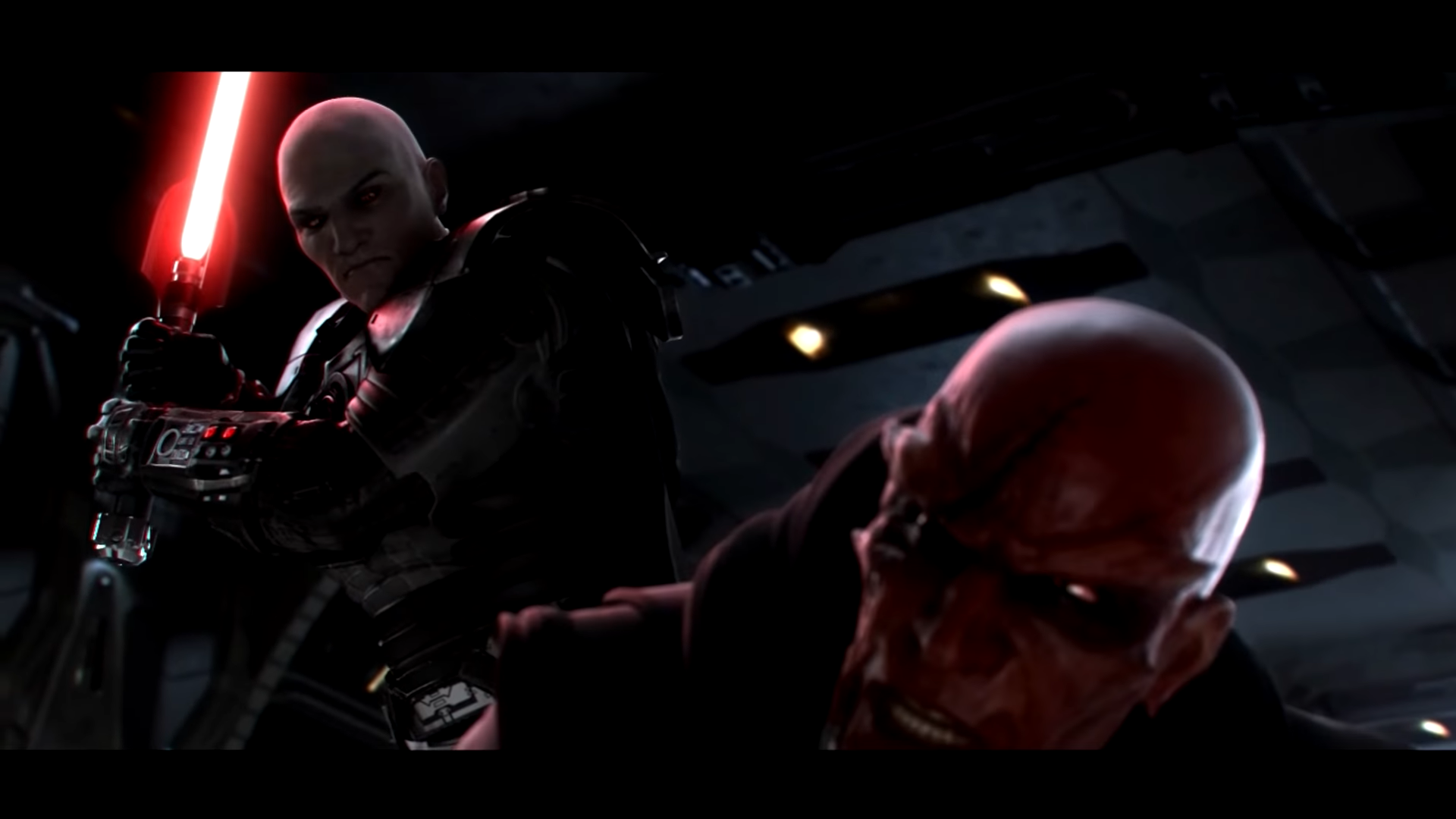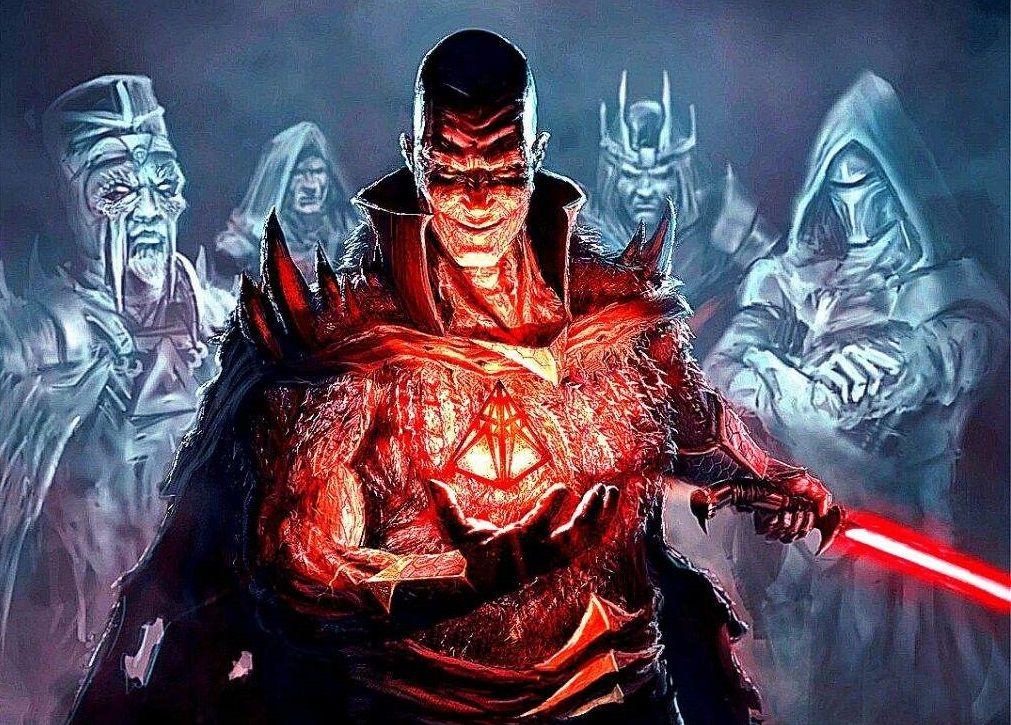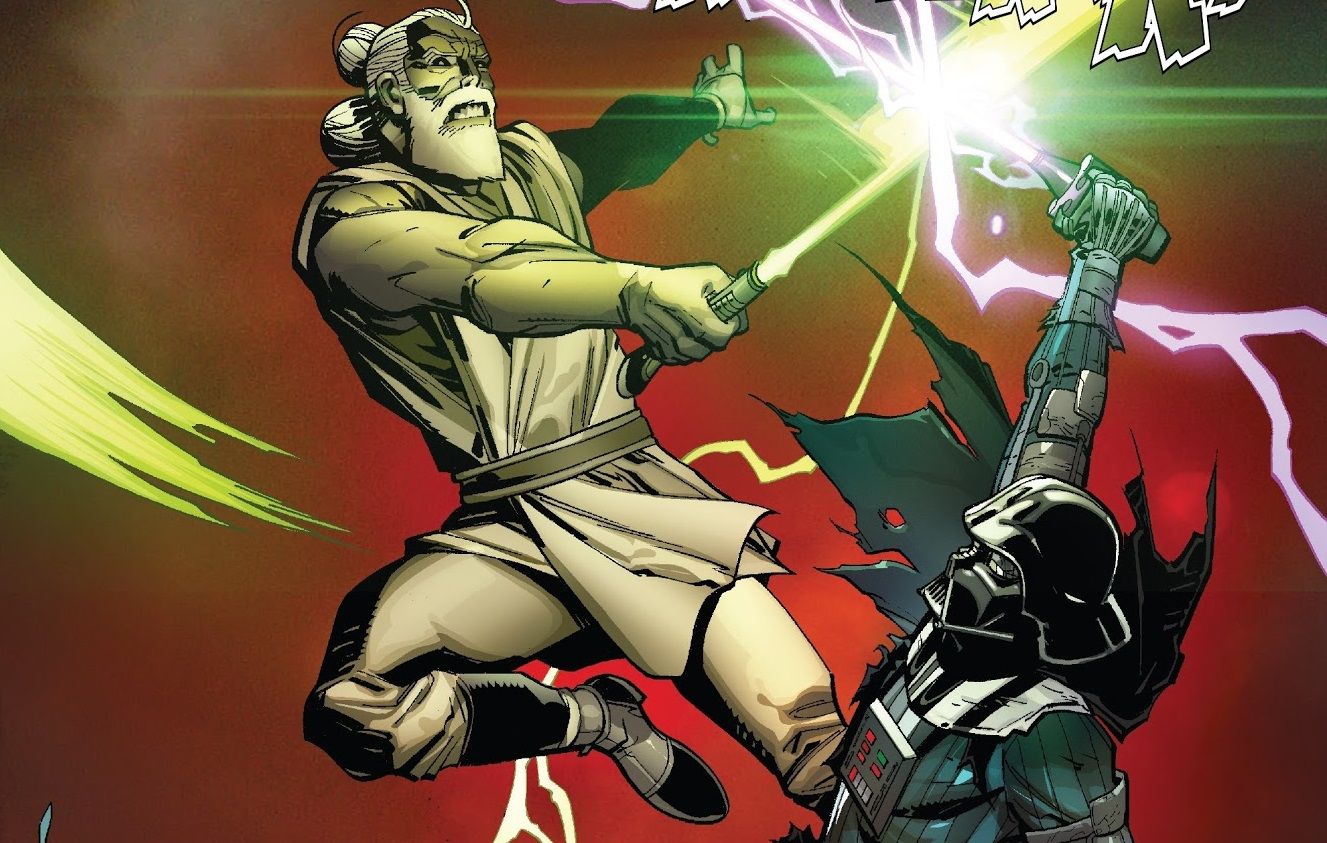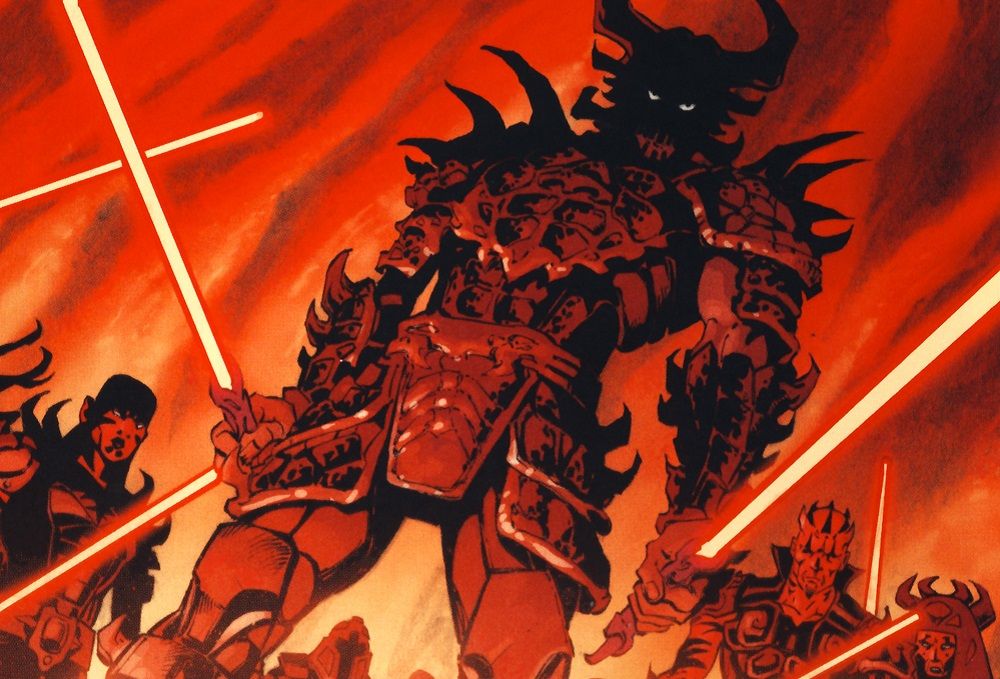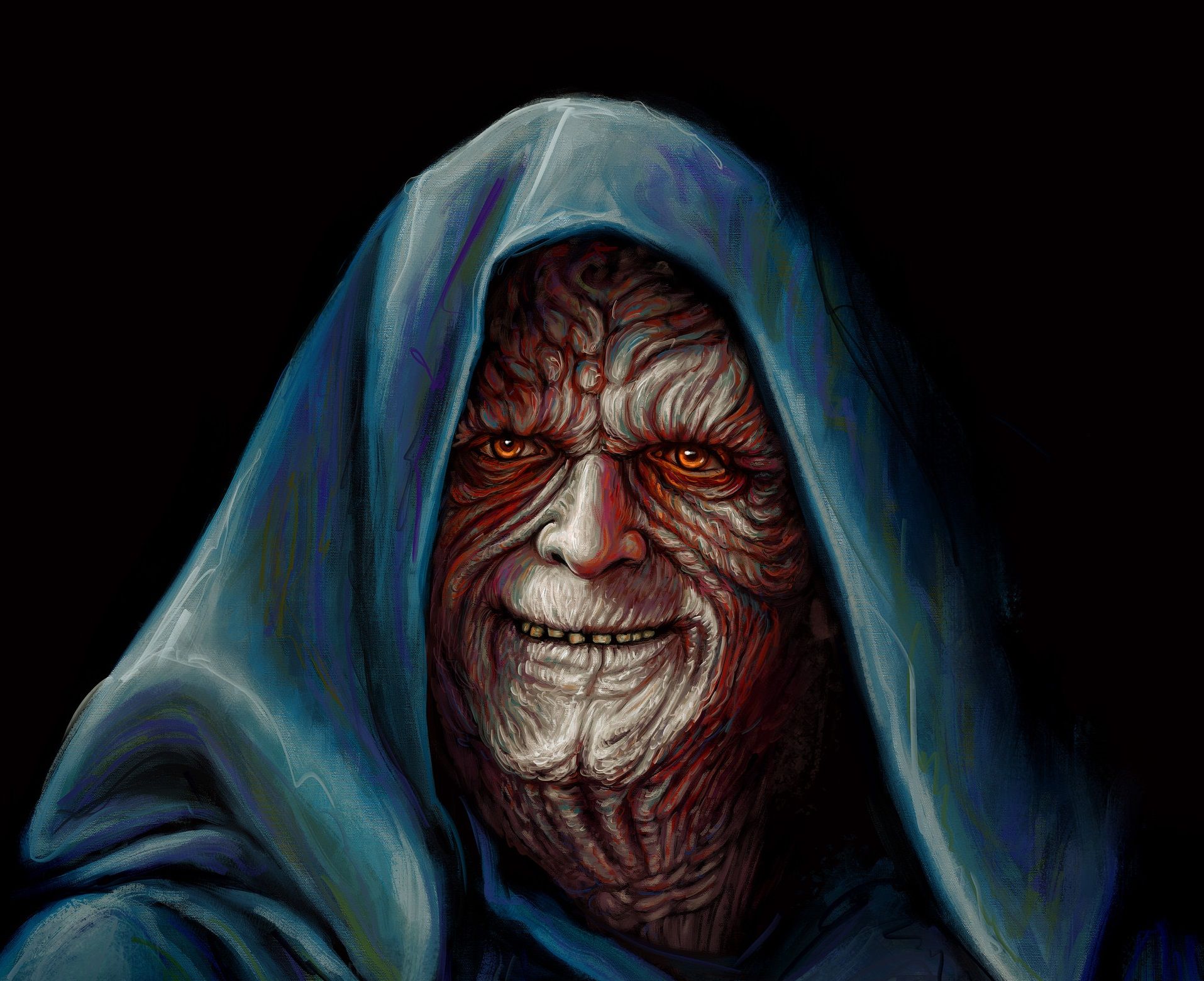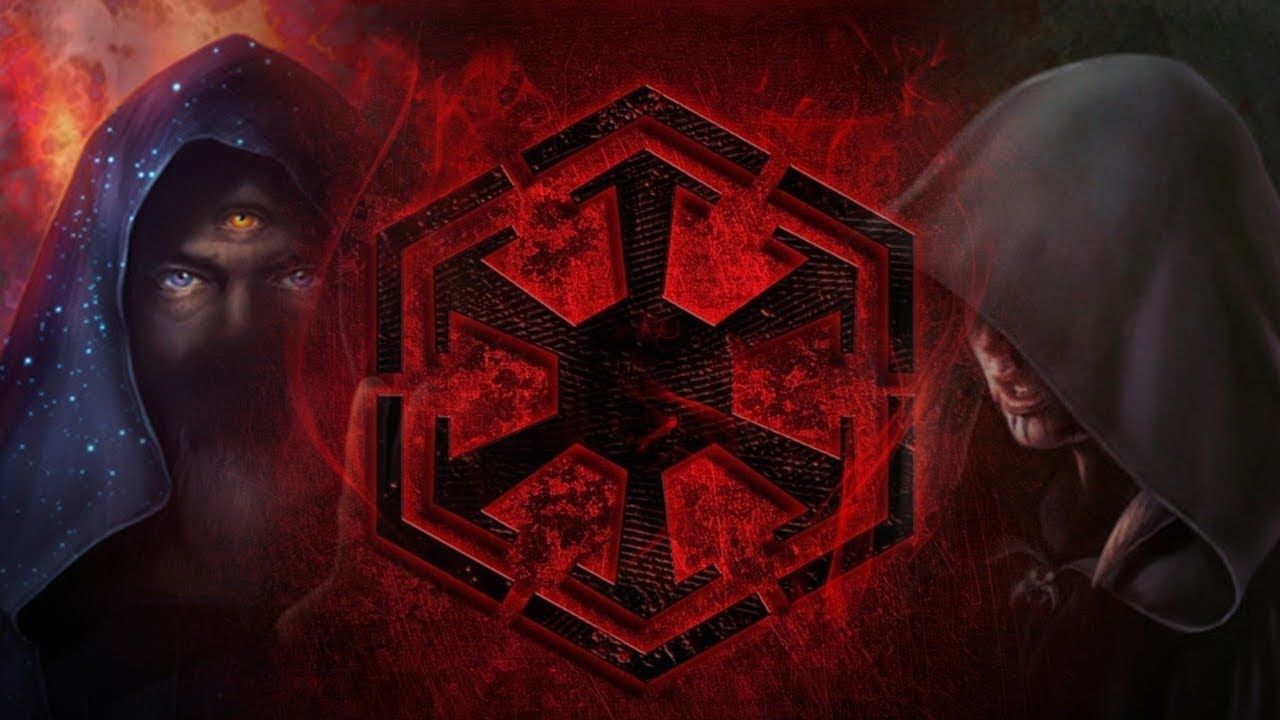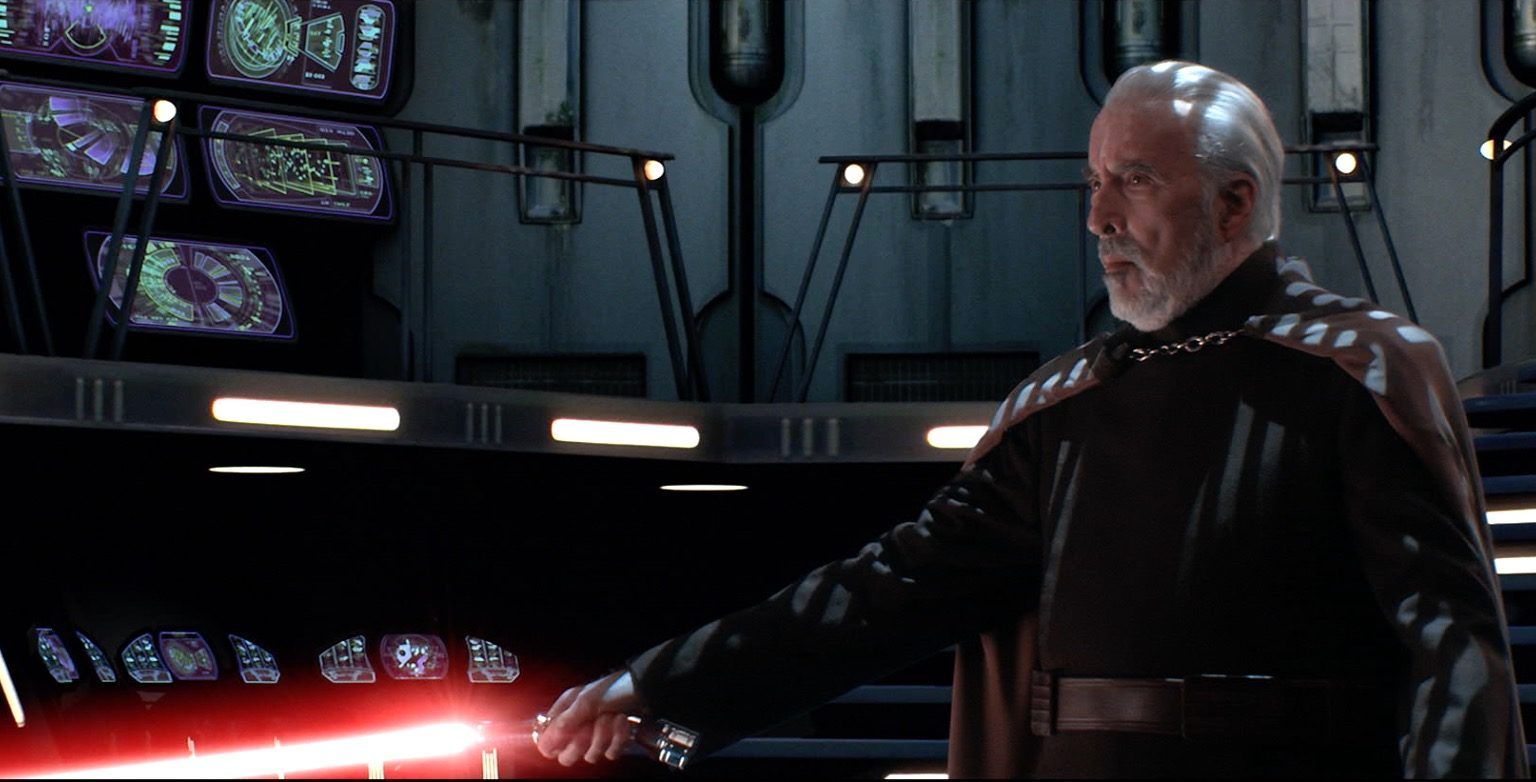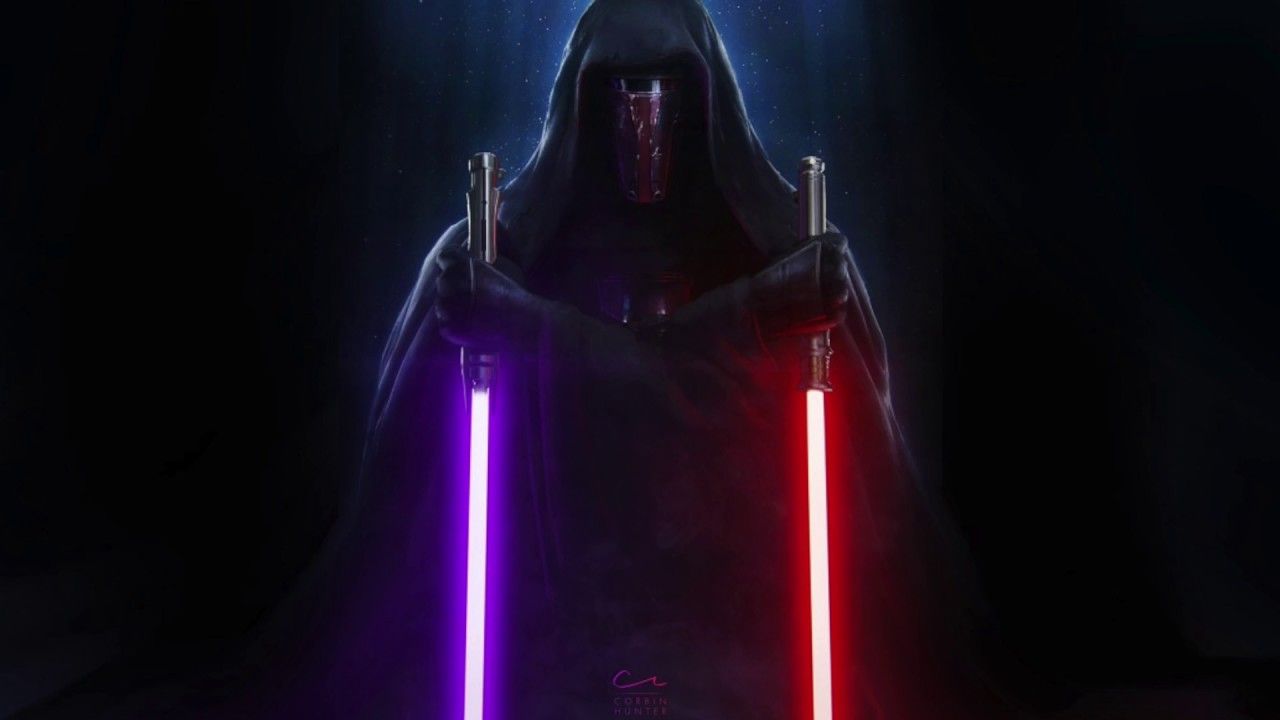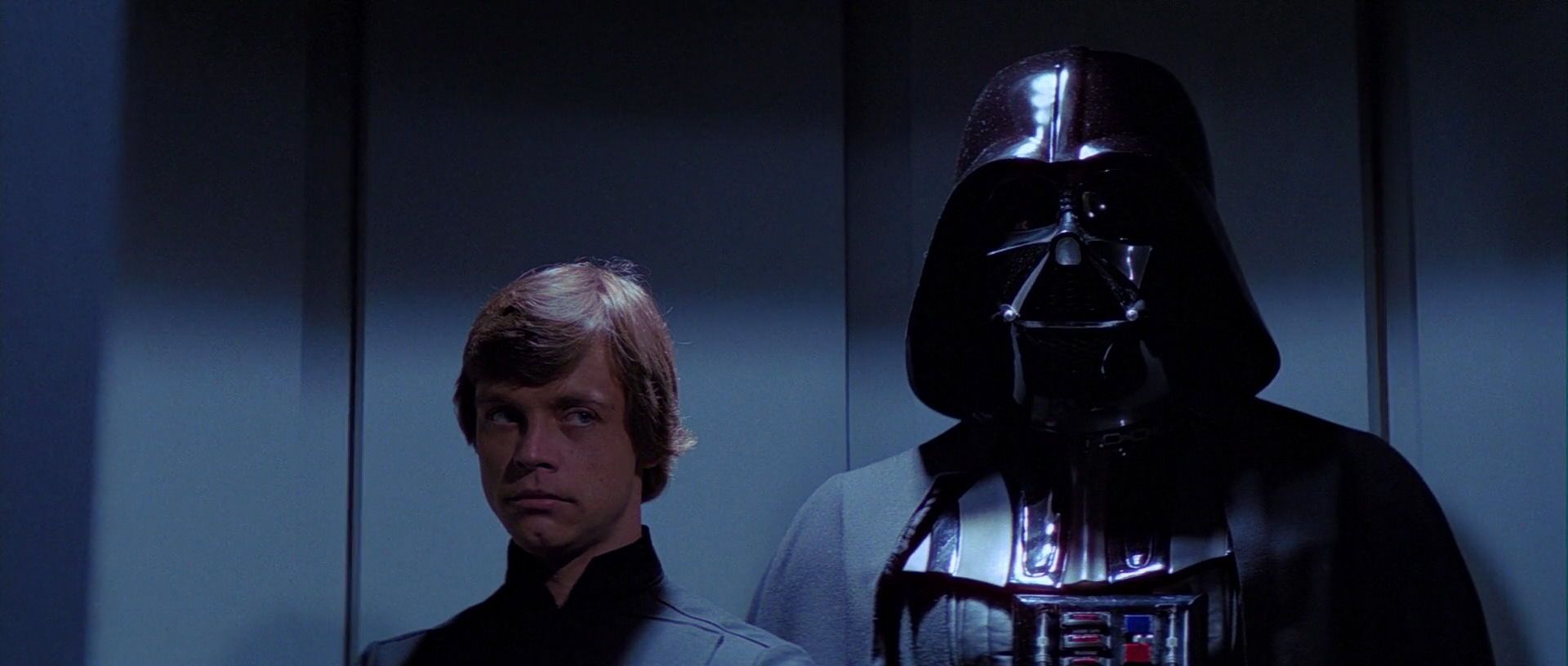The stories of the Star Wars universe wouldn't be quite as engaging without the villains. Darth Vader, Emperor Palpatine, Count Dooku, and Darth Maul all proved to be iconic villains in the films and beyond. Each of these villains belongs to an ancient order of dark side Force users known as the Sith. As opposed to the Jedi, the Sith want nothing more than to dominate the galaxy and bend the power of the Force to their will. Most of the villains in the films are subservient to Emperor Palpatine, also known as Darth Sidious, the Sith Master and architect of the fall of the Republic and the Jedi. Sidious was only able to orchestrate such a grand-scale coup due to commandments and the Sith Code laid down by his Sith predecessors.
The rules and laws governing the Sith Order grew and changed over the millennia since the Order's birth on the planet Korriban. Although the dark side is inherently corrupting, the Sith attempted to curtail the self-destructive elements of their philosophy, in order to pursue more long-term goals. Although ultimately the Sith were defeated by the Jedi, the laws laid out allowed them to cast down the Jedi and conquer the galaxy for a time. As with most classical villains, their downfall came not through a pure contest of power, but rather through arrogance and overconfidence in their own strength. A bit of this stuff isn't official canon anymore, but we don't really care because the stories didn't evaporate when the Legends brand was slapped on the cover.
15 THE SITH CODE: PEACE IS A LIE
The central credo of Sith philosophy is the Sith Code. Created as a mockery of the Jedi Code, it still acts as a summary of Sith beliefs and their view of the Force. The first tenet, "Peace is a lie," stands in direct opposition to the Jedi's statement "There is no emotion, there is peace."
The Sith believe that peace, as the Jedi view it, is stagnation. Conflict is the source of progress and advancement for both individuals and civilizations. Condemning peace as a lie, and pursuing conflict is the Sith's way of justifying their actions to destabilize the Jedi and the Republic.
14 THERE IS ONLY PASSION
The second tent of the Sith Code, stands in firm opposition to the Jedi's supposed emotionless approach to life. While the Jedi value distancing themselves from their emotions, the Sith embrace their emotions and passions. Unfortunately for the Jedi, this led to their downfall at Darth Vader's hands, whose love for his wife began his path to the dark side.
While this tenet is a rule, it is also a warning. Like other Sith before him, Vader turned to the dark side in pursuit of an altruistic goal, but inevitably ended up a slave to the passions that drove him.
13 THROUGH PASSION, I GAIN STRENGTH
The third tenet of the Sith Code codifies the drive Sith hold to use their passions to drive them forward. They believe that the passions they use to gain strength are a part of the natural order. In turn, they believe that the Jedi deny the natural order by denying their emotions and passions.
The main thrust of this tenet ties back to "Peace is a lie." The Sith position themselves as the seekers, as opposed to the Jedi's shepherds. They seek ever greater strength, and push forward through conflict to continually improve and become greater. Where the Jedi avoid conflict, the Sith revel in it.
12 THROUGH STRENGTH, I GAIN POWER
The next tenet of the Sith Code tells us about their central goal: to use their strength in the Force to gain power, usually over others. It drove Darth Sidious' schemes to overthrow the Republic and control the galaxy. Other Sith had smaller-scale goals, but still sought to exercise their strength to gain power.
Power is where most Sith stop striving, forgetting the final tenet of the Sith Code. Their failure often leads to their demise, often at the hands of their own Master. While power is very desirable for a Sith, it should never be the sole end goal.
11 THROUGH POWER, I GAIN VICTORY
Many Sith forget that power itself is not an end goal. Like the Force itself, for a Sith, power is merely another tool on the road to conquest. Darth Sidious epitomized this tenet, amassing great power and focusing it down to a single point, allowing him to destroy the Jedi in one fell swoop.
The Sith believed that true victory could only be achieved by demonstrating one's superior power. Sidious and other Sith before him understood this facet intimately. Darth Revan nearly defeated the Republic with overwhelming force, and his apprentice Darth Malak continued in his stead after Revan's fall.
10 THE RULE OF TWO
Many millennia before the films, the Sith rivaled the Jedi in numbers. Although it allowed the Sith to fight the Jedi more directly, it also proved detrimental when combined with the core Sith philosophy. Apprentices would band together to kill Masters, ultimately weakening the Order.
Darth Bane created the Rule of Two. He decreed that the Sith would only be a Master and an Apprentice, one to embody the power of the dark side, and the other to crave it. This meant that the Sith could only advance if the apprentice grew strong enough to slay the master. The Sith carried this rule forward through to Darth Sidious' time, passing down knowledge and experience from master to apprentice for millennia.
9 THE MASTER MUST FALL TO THE APPRENTICE
While not directly stated, the inherent intent of the Rule of Two was for the Master to fall to the Apprentice's blade. While the intent is not for the master to be complacent in their own demise, the apprentice must still challenge the master to a duel in order to prove they are strong enough to carry on the legacy of the Sith.
Some masters, like Sidious, had many apprentices in sequence, but never more than one at a time would carry the "Darth" title. Some of his apprentices even trained apprentices of their own, in preparation to overthrow Sidious. Darth Tyranus trained Asajj Ventress and Savage Opress, Vader trained Starkiller, and Maul attempted to train Ezra Bridger after escaping Sidious' wrath on Mandalore.
8 STAY SECRET
Although Darth Bane is best known for the Rule of Two, he also laid down another, just as important commandment. He took the Sith into hiding, leading to the Sith being considered little more than a myth by the galaxy at large, and a good portion of the Jedi.
It was this mythical status that allowed the Sith to operate as the secret puppet masters of the galaxy. While Sidious brought the plan to destroy the Jedi and rule the galaxy to fruition, it was the result of millennia of scheming, deceit, and plotting by dozens of Sith before him.
7 TAKE A LIGHTSABER CRYSTAL FROM A JEDI
Like the Jedi, the Sith use lightsabers powered by kyber crystals. Unlike the Jedi, a Sith will dominatea kyber crystal with the dark side, in a process known as "bleeding." This allows the Sith to use the crystals, and gives them the trademark red lightsaber blade.
While any kyber crystal could be bled, it was Sith tradition that a new apprentice must rip a crystal from a slain Jedi's lightsaber and bleed it in order to create a new lightsaber. Darth Vader underwent this ritual when he crafted his new lightsaber in the early days of the Empire, defeating the Jedi Master Kirak Infil'a and taking his lightsaber crystal.
6 THE RULE OF ONE
In the Legends continuity, more than a hundred years after Darth Sidious' defeat, a new Sith Order rose. Led by Darth Krayt, the new Sith rejected the Rule of Two. Unlike the Rule of Two, Krayt's Sith were taught blind obedience and absolute loyalty to the Dark Lord of the Sith, Krayt.
In contrast to the Rule of Two, the lesser Sith were taught not to crave power, but to focus their power towards the larger goals of Krayt and the Order. It worked out for a time, but inevitably Krayt and his New Order fell to the typical Sith infighting, and were forced into hiding once again.
5 THE SITH WHO BROKE THE RULES: DARTH SIDIOUS
It's hard to believe that the guy who brought the Sith's endgame to fruition broke the rules, but it's true all the same. Sidious, first and foremost, broke the rule of secrecy that allowed him to gain victory. He revealed himself to the Jedi, if not the Republic at large. Granted, his future apprentice Anakin took a large role in the revelation.
One could argue that revealing himself as a Sith to the Jedi is what led to his eventual downfall. If he had kept his Sith nature hidden, he would not have been targeted by the two surviving Jedi, and Luke Skywalker possibly would have stopped at Darth Vader.
4 DARTH MILLENNIAL
Yes, there really is a Darth Millennial. And believe it or not, he was actually named well before "millennial" entered the larger societal lexicon. From the Legends canon, Darth Millennial is the fourth Sith in the line of Darth Bane's Rule of Two. That is, he's the apprentice of the apprentice (Darth Cognus) of the apprentice (Darth Zannah) of Darth Bane.
Millennial broke the Rule of Two, clashing with Cognus over its usefulness. He believed the Sith should return to the pre-Bane philosophy of many Sith. Eventually, he fled Cognus' wrath and founded the Prophets of the Dark Side. The Prophets later served Darth Sidious, before he wiped them out.
3 DARTH TYRANUS
Like Millennial, Darth Tyranus, the former Jedi known as Count Dooku, broke the Rule of Two. Although he still ostensibly served Sidious, he trained multiple apprentices in preparation to overthrow his master. Although it was not uncommon for Sith apprentices to seek out their own apprentices as they grew ready to overthrow their master, Tyranus went further by training two apprentices.
The first, Asajj Ventress, likely would have become Tyranus' true apprentice had he been successful in defeating Sidious. The second, Savage Opress, betrayed Tyranus before he got a chance to make his move on Sidious. Savage allied with his brother Maul, a former Sith who abandoned the Order after his "death."
2 DARTH REVAN
Darth Revan is a study in contrasts. He would first betray the Jedi teachings of peace and neutrality, leading a large contingent of Jedi against a Mandalorian invasion thousands of years before the rise of the Empire.
Revan would fall to the dark side, starting a new Sith Order that served as inspiration for Darth Bane's Rule of Two, thousands of years later, albeit with hundreds of Sith acolytes in addition to the main Master-Apprentice pair. He would later betray the Sith in turn, defeating his former apprentice, Darth Malak. He abandoned the Sith Code to rejoin the Jedi and the Republic.
1 DARTH VADER
The last true Sith Lord, Darth Vader was Darth Sidious' final apprentice. In the Legends continuity, he would also break the Rule of Two, training a secret apprentice. Although he followed the Sith Code and other rules and traditions for much of his Sith life, he would, fatefully, betray Sidious at the end of it all.
But it is his final betrayal of Darth Sidious that caused the largest ripples in the Star Wars universe. He abandoned the Sith teachings and returned to the light, valuing the Jedi's teachings of peace over the Sith's belief in conflict. By betraying the Sith Code, Vader ended the threat of the Sith in the galaxy once and for all.

